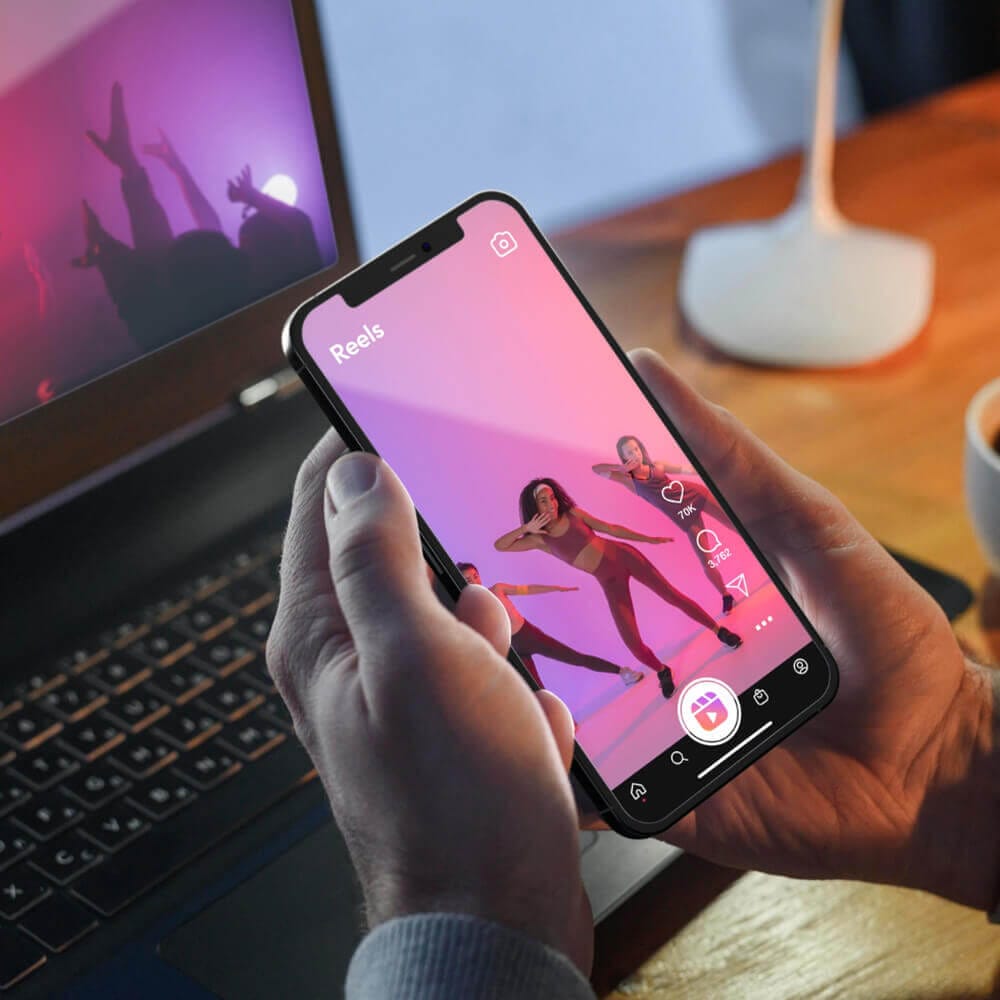In today’s fast-paced digital world, vertical videos have become a dominant content format, taking over the social media landscape. From explainer videos to brand videos and demo videos, the vertical video trend is reshaping how businesses connect with audiences. But what exactly are vertical videos, and why should they be an essential part of your marketing strategy? In this detailed guide, we’ll explore everything you need to know about vertical videos, their advantages, and how to leverage them effectively in your marketing campaigns.
What Are Vertical Videos?
The Rise of Vertical Videos
Vertical videos are filmed and displayed in a portrait orientation, typically with a 9:16 aspect ratio. This format stands in stark contrast to traditional horizontal videos, which are designed for widescreen viewing on televisions or computer screens. With the increasing use of smartphones and mobile devices, vertical videos are optimized for how people naturally hold their phones—vertically—making them a more intuitive and immersive format for mobile-first content consumption.
The concept of vertical video is not entirely new; it has been around for years in various forms, but its widespread adoption can be attributed to the explosive growth of social media platforms like Instagram Stories, TikTok, Snapchat, and YouTube Shorts. These platforms have designed their user interfaces around vertical video, emphasizing the need for content that fits perfectly into a user’s mobile screen without requiring them to rotate their device.
Why Mobile Users Prefer Vertical Videos
The overwhelming majority of online video content is consumed on mobile devices. According to a report by Cisco, mobile video traffic will account for more than 75% of total mobile data traffic by 2022. This shift towards mobile-first content consumption has led to an increasing demand for vertical videos that deliver a better viewing experience on small screens.
Studies show that vertical videos provide a more immersive experience for users on mobile devices because they utilize the full screen without requiring users to rotate their phones. This makes vertical videos a better choice for businesses targeting mobile-first audiences with their explainer videos, demo videos, and brand videos.
Why Do Vertical Videos Matter?
Changing Consumer Behavior
The rise of vertical videos directly mirrors changing consumer behaviours. As consumers become more mobile-centric, the need for vertical content has grown. Mobile devices are typically held in portrait mode, making vertical videos the natural and more comfortable format for most people. For businesses looking to engage with their audience through explainer videos, demo videos, or brand videos, adopting vertical video formats is a smart way to meet the needs of modern audiences.
The importance of vertical videos is backed by statistics:
- 92% of internet users access content via mobile devices, including smartphones and tablets.
- Vertical videos have 90% higher completion rates compared to horizontal videos on mobile platforms.
- Social media platforms like Instagram, Facebook, and TikTok prioritize vertical videos, boosting their reach and engagement.
The Impact of Vertical Videos on Engagement
The most compelling reason to adopt vertical video formats is the significant boost they provide to engagement rates. Videos shot in vertical format naturally fill the viewer’s mobile screen, creating a more engaging and immersive experience. Vertical videos are more likely to capture the viewer’s attention from the very beginning and keep them engaged throughout the video. Platforms like TikTok, Instagram Reels, and YouTube Shorts all encourage vertical video content because it provides an engaging and seamless viewing experience for their mobile-first audiences.
Increased Visibility and Reach
Social media platforms reward vertical video content with higher visibility, leading to better engagement and increased organic reach. With the algorithm changes across platforms like Instagram and TikTok, vertical videos are more likely to appear in users’ feeds, further driving brand awareness and engagement.
Vertical Video vs Horizontal Video: Key Differences
Understanding the differences between vertical videos and horizontal videos is crucial when deciding which format to use for your explainer videos, demo videos, or brand videos.
1. Orientation and Viewing Experience
- Horizontal Videos (16:9): Horizontal videos are ideal for large screens like televisions and computer monitors. They are traditionally used for films, television shows, and long-form content. Horizontal videos are best viewed in a landscape orientation, which is perfect for cinema-style experiences.
- Vertical Videos (9:16): Vertical videos are designed for mobile-first viewing, where the screen is tall rather than wide. This format works best for short-form videos and content that is primarily consumed on smartphones, such as explainer videos, brand videos, and quick social media ads.
2. Engagement Rates
Engagement rates differ significantly between the two formats. Vertical videos tend to perform better on social media, where mobile-first content is the norm. Platforms like Instagram, Snapchat, and TikTok promote vertical videos by default, increasing the chances of higher interaction rates. Studies show that vertical videos on Instagram Stories have 90% higher engagement rates than their horizontal counterparts.
3. Ideal Use Cases
- Horizontal Videos: Horizontal videos are best suited for long-form content like documentaries, tutorials, webinars, and films. They are also used for educational videos or content that needs a cinematic presentation.
- Vertical Videos: Vertical videos are better for social media platforms where users primarily engage with short, impactful content. These platforms encourage rapid consumption of brand videos, explainer videos, and demo videos that deliver a quick message in a mobile-optimized format.
Why Use Vertical Videos?
1. Optimized for Mobile Viewing
With more than 75% of online video views happening on mobile devices, it’s no surprise that vertical videos are optimized for mobile viewing. Vertical videos fill the screen on mobile devices, eliminating the need to rotate the screen and providing a seamless and enjoyable experience. For businesses, this translates to higher viewer retention and engagement.
2. Higher Engagement Rates
One of the biggest advantages of vertical videos is their ability to capture the audience’s attention and keep them engaged. Vertical videos on platforms like Instagram and TikTok have been shown to drive higher engagement rates. They are more likely to be watched from start to finish compared to horizontal videos, leading to increased brand awareness, clicks, and conversions.
3. Perfect for Social Media
Social media platforms like Instagram, TikTok, Snapchat, and YouTube Shorts have tailored their user interfaces to prioritize vertical content. These platforms reward vertical videos with higher visibility, which can result in more exposure for your brand videos, explainer videos, or demo videos. Given that vertical video formats are native to these platforms, they perform better and are more likely to be shared by users, helping businesses reach a larger audience.
4. Maximizes Screen Real Estate
Unlike horizontal videos, which often appear small and cramped on mobile devices, vertical videos take up the full screen, maximizing the available real estate. This larger, more immersive format makes it easier to capture and hold the viewer’s attention, which is especially important when creating ads or brand videos that aim to make an impact quickly.
5. Easy to Repurpose
Creating vertical videos for multiple platforms is easy. A single video can be used across different channels, including Instagram Stories, Facebook Stories, YouTube Shorts, and TikTok. This makes vertical videos highly cost-effective and a valuable tool for businesses looking to get the most out of their content.
6. Focuses the Viewer’s Attention
With their narrow, tall format, vertical videos force viewers to focus solely on the content. This format reduces distractions and ensures that the viewer’s full attention is on the message being delivered. For brands, this is an excellent opportunity to focus on their key selling points, products, or services in demo videos and explainer videos.
7. Tailored for Quick Consumption
The quick consumption nature of vertical videos is a key reason why they work so well on social media platforms. Short, snackable content is more likely to be consumed fully and shared. This format is ideal for businesses looking to convey concise, impactful messages to a mobile-first audience.
Best Examples of Vertical Videos
Here are some examples of brands that have effectively used vertical videos to increase engagement, reach, and conversions:
1. IBM
IBM used vertical explainer videos to simplify complex technology concepts. By adopting the vertical video format, IBM was able to deliver clear, concise explanations of their products and services in a mobile-optimized format that was easy for users to consume.
2. GE Healthcare
GE Healthcare took advantage of vertical video to create product demonstrations and tutorials that were easily shareable on social media. This helped them increase visibility and reach a broader audience of healthcare professionals and consumers.
3. Slack
Slack is known for using vertical videos in its social media campaigns, particularly for product walkthroughs and tutorials. These videos were short, engaging, and optimized for mobile viewers, making them ideal for platforms like Instagram and YouTube.
4. Mailchimp
Mailchimp used brand videos in the vertical format to tell their story and highlight the benefits of their email marketing platform. These videos were designed to be visually appealing and easy to digest on mobile devices.
5. Medtronic
Medtronic used demo videos in a vertical format to explain how their medical devices work. These videos were highly effective in reaching healthcare professionals, offering a simple and direct way to communicate complex medical information.
6. FedEx
FedEx created engaging vertical video ads to promote their shipping services. By using this format, they were able to deliver their message quickly and effectively to a mobile-first audience, leading to increased brand awareness.
Frequently Asked Questions
1. How Do I Make My Video Vertical?
You can easily make your video vertical by filming in portrait mode or cropping an existing horizontal video to fit the 9:16 aspect ratio. Editing tools like Adobe Premiere Pro, Final Cut Pro, and free mobile apps like InShot and Canva can help you resize and crop videos to meet the vertical format.
2. Do Vertical Videos Perform Better?
Yes, vertical videos tend to perform better on mobile-first platforms. They are more engaging, have higher completion rates, and are more likely to be shared by users. For businesses looking to drive engagement, adopting vertical video formats is a smart choice.
3. Are Vertical Videos the Future?
As mobile content consumption continues to rise, vertical videos are likely to become even more dominant. Platforms like TikTok and Instagram are already built around the vertical video format, and other platforms are following suit. Businesses that embrace vertical video now will have a competitive advantage in the future.
Vertical Video Format Size
For most platforms, the recommended vertical video size is 1080×1920 pixels, which corresponds to the 9:16 aspect ratio. This size ensures your videos are optimized for mobile devices and look professional across different platforms.
Horizontal Video
While horizontal videos remain relevant for some use cases, they are less effective on mobile devices, where vertical videos dominate. If your primary audience engages with content on mobile platforms, vertical videos are the way to go.
Vertical Video Size for YouTube
For YouTube Shorts and mobile-friendly YouTube videos, the recommended vertical video size is 1080×1920 pixels (9:16 aspect ratio). This size ensures the video fits perfectly within YouTube’s mobile interface and offers a better user experience.
What is Vertical Video Aspect Ratio?
The vertical video aspect ratio is the width-to-height proportion of the video. For vertical videos, the standard aspect ratio is 9:16, which is the opposite of the traditional 16:9 ratio used for horizontal videos.
Conclusion: Why Vertical Videos Should Be Part of Your Strategy
Vertical videos are not just a passing trend—they are a crucial part of modern video marketing. Whether you are creating explainer videos, demo videos, or brand videos, leveraging vertical video formats will help you engage your mobile-first audience and boost your brand’s visibility. As video consumption shifts towards mobile devices, adopting vertical videos in your marketing strategy will position your business for success.


